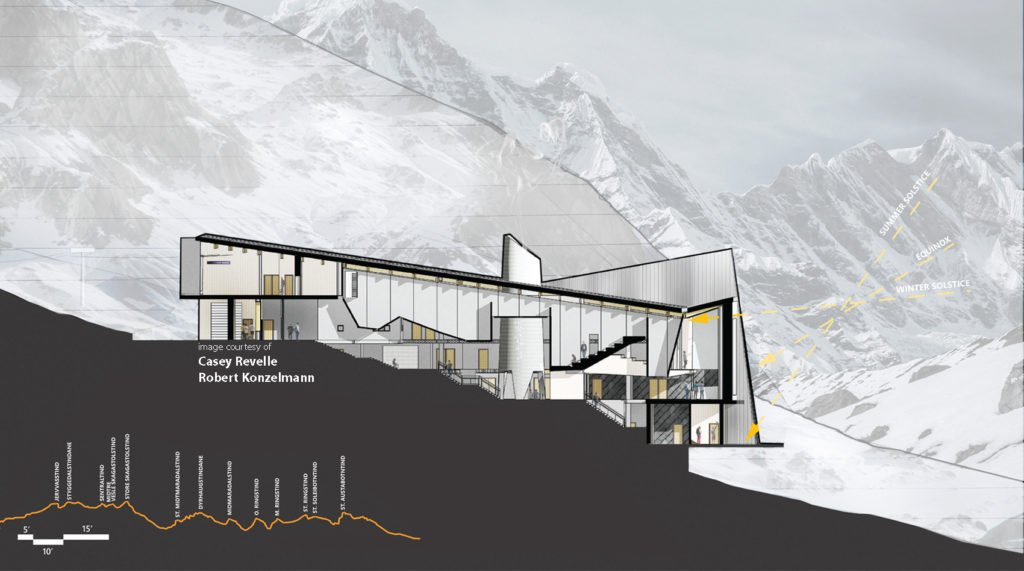
In architecture, poche’ is the process of darkening the area of walls, columns, and other solid elements created by a cut plane . This process is frequently utilized in representing buildings and objects in plan, section, and figure-ground (drawings that create a high contrast between spatial areas and cut elements). Blackening the cut elements helps viewers easily identify the depth of elements in floor plans and sectional drawings.
Drawings represented in a smaller scale benefit from the high contrast nature of poche’; it is an ideal method for effective communication when drawings are intended to be displayed in a presentation-like format, or the audience is standing more than 3 feet (1 meter) away from the drawings. In contrast, if a drawing is depicted in a large-scale format, the poche’ method has the potential to dominate and wash out the main content of the drawing.
The main question then becomes what are the appropriate scales that the poche method can be used to enhance the outcome of plan and section drawings?
I frequently use poche’ when I need to display drawings in the initial phases of design that do not contain many details, but rather display the functional configurations in plans and spatial articulation in section drawings. Any drawings that utilize scales smaller than 1/4’=1’-0” or 1:50 benefit from this presentation method. Periodically, using a middle-gray value instead of black is appropriate for drawings depicted at a scale close to 1/4’=1’-0” to reduce the high contrast between cut elements and spatial void in plans and section drawings. By doing so, the elements represented do not visually dominate a composition and are less straining on the eye of the viewer.
Drawings that are depicted in a scale larger than 1/4’=1’-0” should use a hierarchy of line widths and weights to create depth of elements in the drawings.
The figure above illustrates how the poche technique defines the cut plane in the building section. The filled walls, floor plates, ceilings, and solid elements define the spatial aspects of the building and allow viewers to observe how the various building elements are unified, as well as establish a platform for other analytical studies to be incorporated such as solar studies as seen in the figure mentioned above.